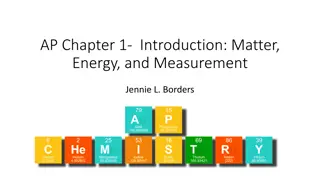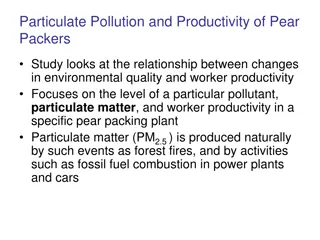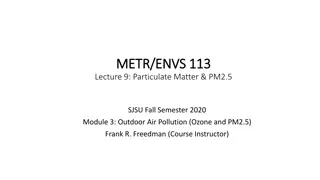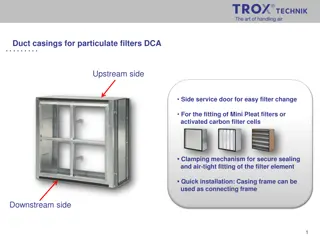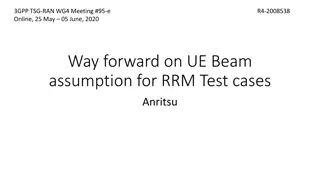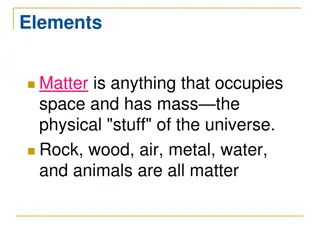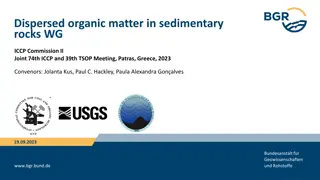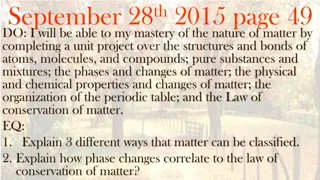
Measuring Particulate Matter in Classroom: Test Methods & Analysis
Discover how to measure particulate matter in the classroom, using sensors to assess dust levels indoors and outdoors. Explore hypotheses, test methodologies with the Classroom Canary device, and extend investigations over time to track changes in particulate matter levels.
Download Presentation

Please find below an Image/Link to download the presentation.
The content on the website is provided AS IS for your information and personal use only. It may not be sold, licensed, or shared on other websites without obtaining consent from the author. If you encounter any issues during the download, it is possible that the publisher has removed the file from their server.
You are allowed to download the files provided on this website for personal or commercial use, subject to the condition that they are used lawfully. All files are the property of their respective owners.
The content on the website is provided AS IS for your information and personal use only. It may not be sold, licensed, or shared on other websites without obtaining consent from the author.
E N D
Presentation Transcript
Particulate Matter Let s Test Carbon Dioxide Lesson 11 Let s Test Classroom Climate
How can we measure Particulate Matter? We can measure Particulate Matter with a sensor that will tell us how many dust particles are in a sample of air. PM is usually measured in these different fraction sizes:
Lets test Questions and hypothesis Let s Test Questions and hypothesis Work in a small group and discuss these questions: What do you think the level of Particulate Matter in the classroom is currently? Why do you think it is this level? What do you think affects the Particulate Matter level indoors? What do you think the Particulate Matter level outside is? What do you think affects the Particluate Matter level outside?
Lets Test Classroom Canary You will be using a device, called the Classroom Canary, to test the Particulate Matter in your classroom. Choose 3 areas in your classroom that the Particulate Matter level may differ in. For example: one by an open window, one in a space away from people one in the centre of a group of children
Lets Test Classroom Canary 1. Make predictions about which of your 3 areas will have the highest and lowest Particulate Matter levels. 2. Measure the Particulate Matter level in each of the 3 areas using the Classroom Canary. 3. Record your results. 4. Next, test the Particulate Matter levels outside how do they differ to indoors? 5. Why is this?
Lets Test Extension Extend your investigation into Particulate Matter by carrying out an investigation over time. Record the Particulate Matter levels in your classroom at regular intervals over one week. Make predictions about what you think will happen beforehand. Write a conclusion to summarise your findings why? Draw a line graph to show the change in Particulate Matter levels over time. Remember to keep your test fair by taking a reading from the same position in the room!

